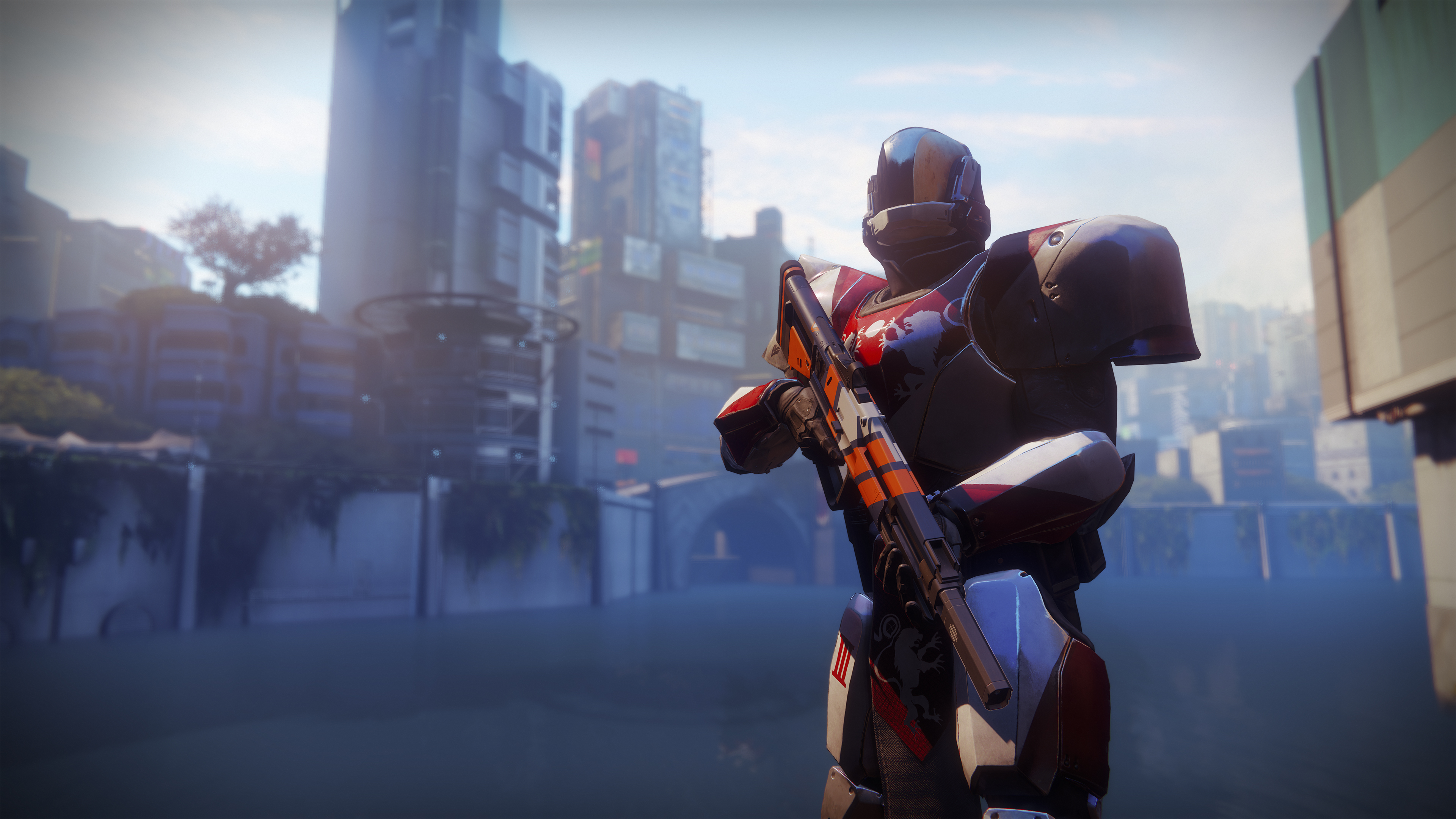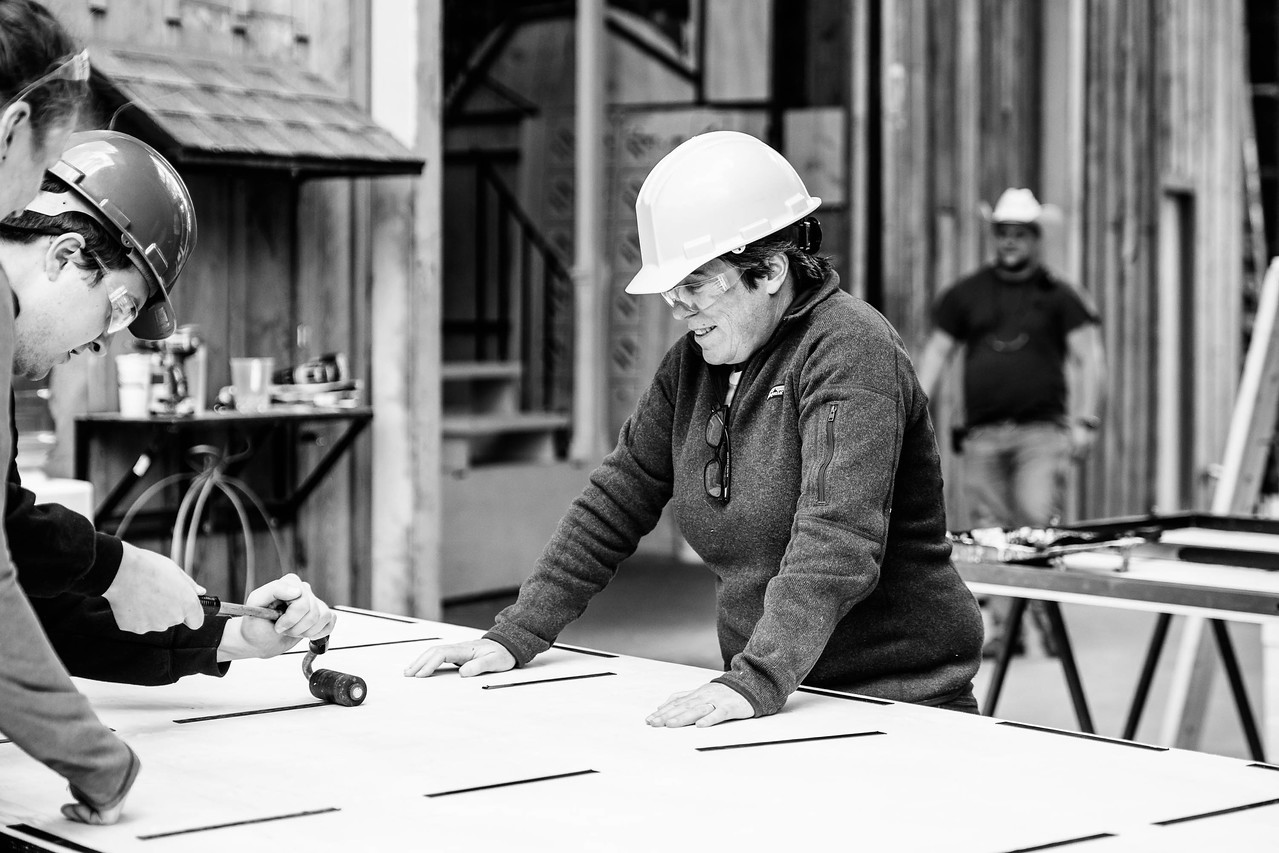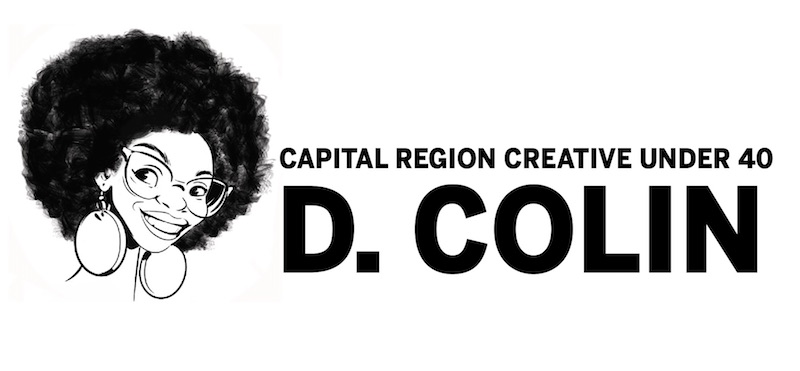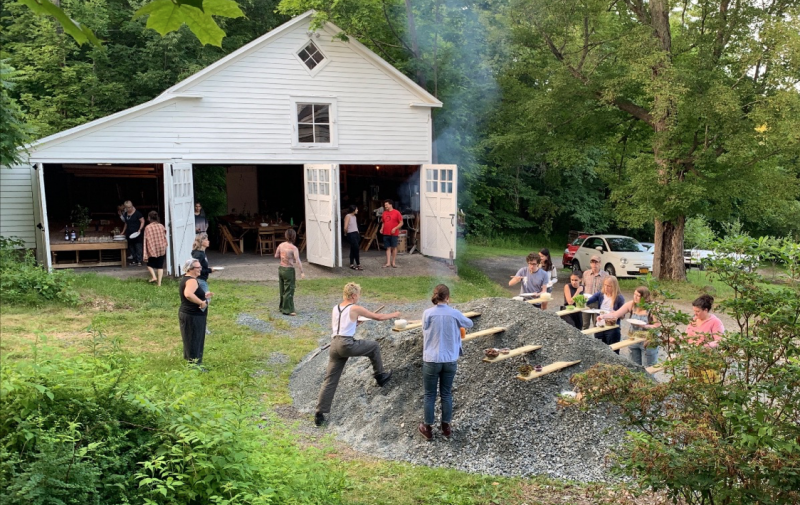High-resolution screenshot from the PC version of Destiny 2 courtsey of Vicarious Visions. Photo by Bryan Lasky
Destiny 2 had over one million concurrent players on the day of its launch on video game consoles on Sept. 6. The massive multiplayer fantasy space shooter launched on PC in late October putting Vicarious Visions, the formerly independent game studio, in charge of a portion of one of the largest video game franchises in history.
“It is definitely a different stratosphere for us working on a game of this size,” said Jennifer Oneal, the studio head of Vicarious Visions.
Destiny, created by Bungie the studio behind the fabled Halo first-person shooter franchise, severed their ties with Microsoft and the Halo franchise in 2007. Destiny was their first non-Halo project in decades and the first game they’ve ever released for PlayStation. They set out to create a new type of game–a hybrid between a first-person shooter and an MMO that would bring teams of people together online as different classes with various skill sets to take on complex missions and do battle in vast worlds in order to save the universe
The first Destiny was received as a work in progress, a first attempt. Destiny 2 has been highly praised and is regarded as one of the best first-person shooters of the year. Due to its nature, the game is updated constantly; new content, challenges, and rewards are added year round. It will be up to Vicarious Visions to manage the PC ecosystem.
Currently, the studio plays a major role in fueling the local tech economy and recruiting heavily from local universities while also curating and updating a major PC title that has the power and allure to draw the attention of programmers and video game industry workers from around the world.
It’s also helping to cultivate a large technology hub in Troy.

“Troy was recently named one of three digital gaming hubs in New York by the state. There is a lot of momentum right to make this area a hub for game developers,” said Mark DeStefano, the Acting Director of Game and Simulation Arts & Sciences at Rensselaer Polytechnic Institute.
Vicarious Visions was founded in 1991 by Karthik and Guha Bala, collectively known as the Bala brothers. The duo’s earlier titles consisted of space simulators and handheld titles, developing games for the GameBoy Color in 1999.
“It was pretty much a labor of love by two teenagers who wanted to make games,” Oneal said on the start of the studio.
In the early 2000s the studio worked on a number of Gameboy franchises including Spider-Man and Tony Hawk’s Pro Skater. Activision, one of the largest game developers in the world, began to take notice of the independent studio and eventually bought them in 2005.
“Activision decided ‘Hey, listen, here’s a team that’s really reliable, who produces great work. If we don’t purchase them now, then some other developer; EA or Disney is going to purchase them’ because, at the time, VV was working on everybody’s games. THQ, Disney, you name it,” she said. “Activision made the decision to go ahead and make that purchase and it was a great decision for all parties. From there, that gave VV the opportunity to do bigger and better things.”
The studio continued to create games based on movie and television franchises and started working on Marvel: Ultimate Alliance 2, one of the studio’s most well-known titles.
Once licensing faded out of video games, Vicarious Visions teamed up with Toys for Bob, another game developer located in California to create Skylanders, and attempted to incorporate being able to play as your favorite action figure in a video game. The toys were ubiquitous for years.
“There is nothing more heartwarming than seeing children fall in love with your work,” she said.
Skylanders became a period of advancement for Vicarious Visions.
“When I look at where we were on Marvel: Ultimate Alliance 2 in terms of our story-telling ability and our ability to produce in-game cinematics versus where we are now, it is just night and day,” she said. “I would say some of the cutscenes that you see in the latest iterations of Skylanders are like watching a Pixar film.”
The Bala brothers left Vicarious Visions in late 2016 to create Velan Studios, a game developer located in Troy. Their studio received $7 million in funding, according to the Times Union. Their goal is to advance the growth of game developers in the Troy area.
In recent years, Vicarious Visions has shifted from working on video games for children to working on Destiny 2 and Crash Bandicoot N. Sane Trilogy.
“As much as we loved the VV that we were; working on those Nintendo titles, working on children’s titles, I think that there was always this desire to break out and work on something that was more mainstream, more multiple ages,” she said. “Things that we as players would play ourselves.”
Vicarious Visions became involved in running the development of Crash Bandicoot N. Sane Trilogy after Sony and Activision came to the conclusion that Crash Bandicoot should get a remaster. The studio expressed that it wanted to be involved in the project
Crash Bandicoot: N. Sane Trilogy, released on June 30, sold an estimated 2.5 million copies according to a tweet from a gaming market analyst. Vicarious Visions rebuilt the entire game from scratch, including the in-game animations and assets. New technology was used, for example, to make the fur on various creatures look realistic and “fuzzy.”
The 3D platformers reportedly have the same notoriously extreme difficulty as the originals (according to different reviews of the title), so players can relive the controller-smashing rage and ultimate satisfaction they get from advancing through the challenging levels.
The studio has worked on Crash Bandicoot games in the past, including Crash Nitro Kart released in 2003.
“You’re kind of like a historian bringing to life something that was the Mona Lisa of video gaming 20 years ago,” she said.
Now Vicarious Visions is focused on Destiny 2–a game that in many ways is much more advanced than the previous titles they’ve tackled.
Vicarious Visions first came to work on Destiny 2 after expressing interest in the franchise to Activision and Destiny’s developer, Bungie, about half a year before beginning development on it.
The PC port of Destiny 2 boasts 4K graphics and will be able to go above 30 frames per second, according to Destiny 2’s executive producer Joe Fisher.
“Our goal and our hope is that we do right by the PC fans,” said Fisher. “The PC audience has kind of a reputation for having a very high bar and being very specific about what they want from a PC game… Keeping the core of Destiny intact and making it feel like a true Destiny game while also appealing to the specific needs of the PC player is probably our number one goal and what we really hope.”

With the popularity of PC gaming over consoles, Oneal hopes that Vicarious Visions can connect to an audience that hasn’t had the opportunity to play Destiny yet.
“One of the key factors we looked at when coming to PC is that we don’t want anybody looking at the game as a console port. We wanted to make sure that it feels like a PC game, it plays like a PC game,” David Shaw Bungie’s head of PC development told PC Gamer in May of this year. “So we kind of have embarked on an interesting situation. We’re not outsourcing it. Instead, we’ve developed this true partnership with Vicarious Visions in Albany, New York. We look at them as an extended part of the dev team,” he added, confirming an earlier report on Vicarious Visions contributing to Destiny 2.
The team at Vicarious Visions isn’t just made up of engineers who have spent years working in the industry. The developer offers a cooperative program for those who attend Rensselaer Polytechnic Institute and the Rochester Institute of Technology, allowing them to work and be credited for developing video games while still being a college student.
Fisher interned as a quality assurance tester at Vicarious Visions while attending Union College in 2004 and has been able to progress in the studio to where he is now, as Destiny 2’s executive producer.
“My first game was, actually, it’s pretty funny, it was That’s So Raven for Game Boy Advance,” he said. “Which is kind of a funny game to start on; being a video gamer I wasn’t expecting that.”
When Fisher graduated in 2005, Vicarious Visions offered him a full-time position as a quality assurance tester. He accepted, despite the position being temporary.
“I had to take a risk of like ‘Hey, do I take this temporary position on something that I’m really passionate about or do I do something safer and more corporate-y, with like a lot more money,’” he said. “But, I took the risk on what I was passionate about and it ended up really paying off.”
In Fisher’s case, he originally studied engineering but ended up preferring the management aspect of developing video games.
His advice for students who want to get involved in game development is not only to apply, but to apply to the quality assurance department so that you can see the inner workings on how games are made.
“You get to learn all about game development and you can really decide one, if it’s for you and it’s something you’re interested in and two, what discipline you want to be interested in long-term,” he said.
Three things that Vicarious Visions looks for in candidates, according to Oneal, are people who are willing to learn, be creative and work with a team.
“It’s a very inclusive environment, it’s a very collaborative environment and a person that interviews with us needs to understand that and exhibit those kinds of skills in personal and communication skills,” said Oneal.
Anyone coming to work at Vicarious Visions will likely be very involved in their community.
“We formed our little microcosm of a melting pot here,” she said. “We’re a tight group of people, we spend time with each other outside of work. My best friends are here. I think that that’s what happens to people over time is they come to VV, they’ve joined the family is what we say.”
Looking ahead, Oneal says the studio would like to develop its own intellectual property and perhaps get involved in developing a title for the burgeoning eSports industry.
“I think video games are going to be the core that drive all kinds of things from consumer products, to eSports, you name it. We want to be at the center of all of that,” she said.
For Oneal , the best part about developing video games is the people she gets to work with.
“They are the most intelligent, funny, creative, group of people I’ve ever worked with,” she said. “I love coming here and just spending the day just talking to people here and hearing their ideas and seeing how much love and passion they have for their work.”





